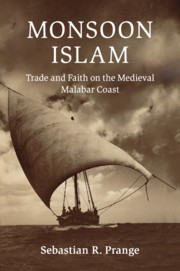Summary
The Conclusion returns to the legendary convert king, Cheraman Perumal, to trace the subsequent iterations of his story. This reverals the shifting contours of the world of Monsoon Islam during the periods of Portuguese oppression, British colonial rule, the nationalist struggle, and Indian independence. It suggests that the need to negotiate between the local and the world beyond, between the faithful and the infidels, the ideals and necessity, has been a central feature of Islamic history from its inception. Monsoon Islam is one trajectory within the diverse development of medieval Islam, a post-caliphal age marked by the regionalization and diversification. What distinguishes Monsoon Islam is that its traditions, ideologies, and customs reflect the values of merchants rather than the interests of a state, political elite, or state-supported religious class. Monsoon Islam, then, offers a way to integrate the myriad ways in which people, above all ordinary traders, used and reshaped Islamic institutions and precepts to address the specific challenges, opportunities, and settings they found themselves confronted by in their pursuit of profits.

